12 weird and wonderful console peripherals
Before their time, or just bizarre?

When it comes to gaming, a well-designed and comfortable controller is key.
We're celebrating 50 Years of Games in conjunction with the Golden Joystick Awards 2021, the world's biggest public-voted games awards show. This year's show will celebrate a milestone in gaming history, the release of Computer Space, the world's first commercial arcade machine in November 1971. And we'll be looking for your votes on the best console of all time (starting 3PM GMT, November 8).
Games and the consoles we play them on can be as advanced as they like but if the actual experience of playing them is uncomfortable or overly complicated, we're just not interested.
Still, game and console developers are adventurous and over the years we've some interesting attempts to add something a bit different to player experiences with peripherals that are either themed or designed to make a console stand apart from others on the market.
Sometimes these efforts prove fruitful and timely – like the wildly popular Guitar Hero axes – but sometimes they result in weirdness that was either before its time or not suited to any time at all. Just look at the Xbox Kinect – the hopes were high but the sales figures were far from it.
Read on for a selection of some of the kookiest peripherals and accessories we've ever had a chance to get our hands on.
- Vote for your Ultimate Game of All Time and Best Gaming Hardware of All Time by visiting goldenjoysticks.com - voting ends on Nov 12.
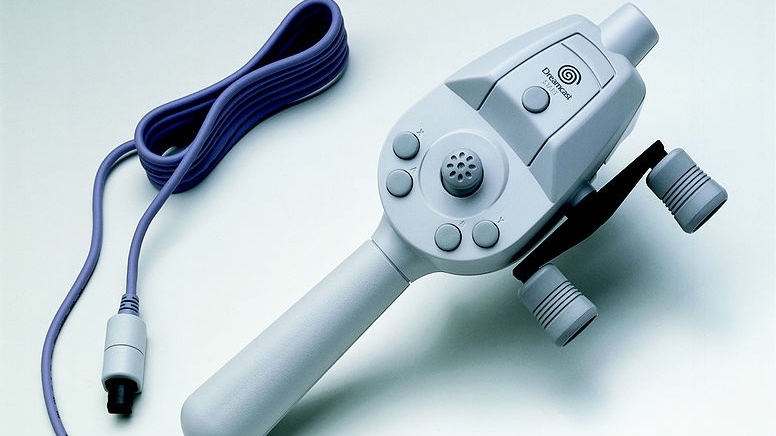
Sega Dreamcast Fishing Rod
There’s niche...and then there’s the Dreamcast fishing rod. Believe it or not this wasn’t the first or last gaming peripheral to have been created specifically for fishing games but it’s the only official first party one. Created by Sega for the Dreamcast, it was launched with Sega Bass Fishing.
The peripheral ended up being compatible with only six fishing games overall but it was also useable with, for some reason, Virtua Tennis and Soul Calibur, too.
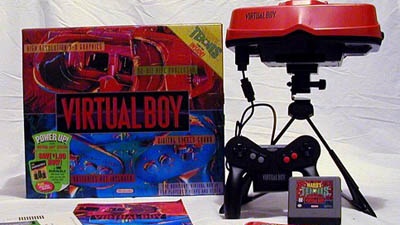
Virtual Boy
20 years ahead of its time, the Virtual Boy was Nintendo’s first attempt at virtual reality. The Virtual Boy is a tale of peripheral disaster from beginning to end.
Development of the headset lasted four years but in this time its 3D LED technology was scaled-back as a result of potential health and cost concerns. You’ll be relieved to hear Nintendo had the sense to redirect most of these cut funds into the development of the Nintendo 64. As a result, though, the Virtual Boy was rushed out in 1995 where it was a critical and commercial disaster.
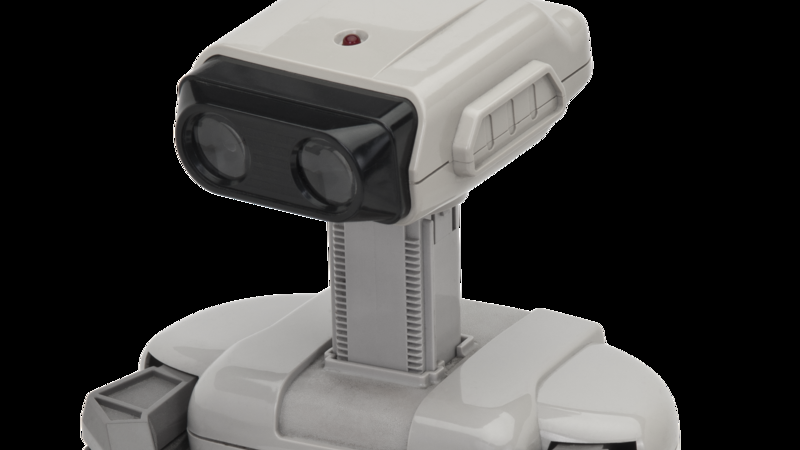
NES R.O.B
R.O.B, or Robotic Operating Buddy, was launched by Nintendo in 1985 as an accessory for the NES. He was built in response to the North American Video Game Crash in 1983 as an attempt to convince consumers the NES was a toy rather than a console. R.O.B didn’t stick around particularly long as he only had support for two games called Gyromite and Stack-Up and players just weren’t interested in having a robot buddy play alongside them.
Despite his unpopular reception, R.O.B has later appeared as a playable character in later Nintendo games including Mario Kart DS and Super Smash Bros Brawl.
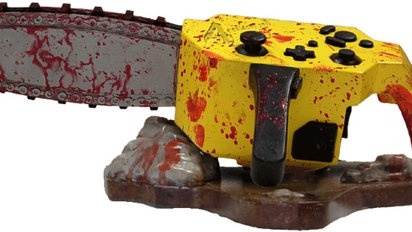
Resident Evil Chainsaw
We’re not sure how we’d feel if we walked into someone’s home and saw this controller sitting on their coffee table. Concerned, perhaps?
This controller was released alongside the PlayStation 2 and GameCube versions of Resident Evil 4 and as far as novelty gaming items go, it’s clever. As far as ergonomics go, however, we think it looks like quite the opposite. How would you even begin to hold this thing? You could find out if you like – there’s one left in stock on the UK Amazon store and it’ll only cost you £69.99. At the very least it’s a great collector’s item for the Resident Evil fanatic in your life.
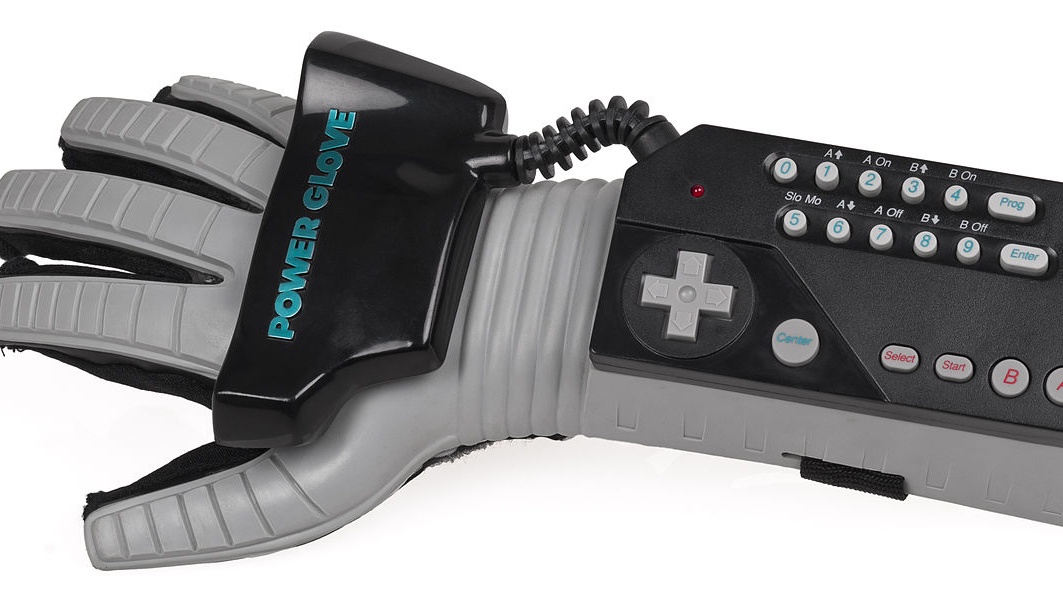
NES Power Glove
This Nintendo NES accessory from 1989 actually looks like a little bit like a Fallout Pip Boy. Unfortunately, visuals are where all similarities end. With its motion and finger flexing sensor controls, the Power Glove was supposed to be a glimpse into the future of gesture-controlled gaming.
Instead it was more of a glimpse into how not to do console accessories. The glove was quickly and cheaply thrown together with specific support for only two games with poor movement tracking accuracy, and was only released for right-handed players.
It had a fairly decent marketing campaign, though, so it sold around 100,000 units in the US. But when it was discovered just how poorly it performed the Power Glove ended up a critical failure.
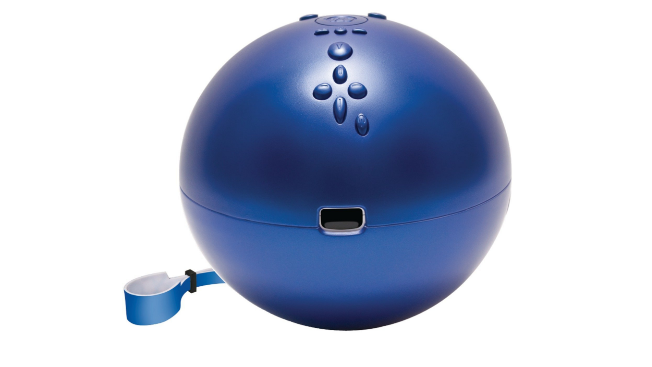
Wii Bowling Ball
Remember the spate of complaints from Wii owners who lost their hold on the Wii controller and cracked their TV screens/loved ones? We hope they never considered this accessory.
For anyone who felt that Wii bowling was lacking in realism with the console’s standard controller, however, this was no doubt ideal. To use this peripheral you simply had to open it up, pop your Wii remote inside, and use it like you would an ordinary bowling ball. Well, to a point – under no circumstances was this a bowling ball you should let go of.
Unsurprisingly it wasn’t an official Nintendo accessory. It also wasn’t the only ridiculous sport accessory with other third parties creating golf clubs, snooker cues, nun chucks, and rowing machines.
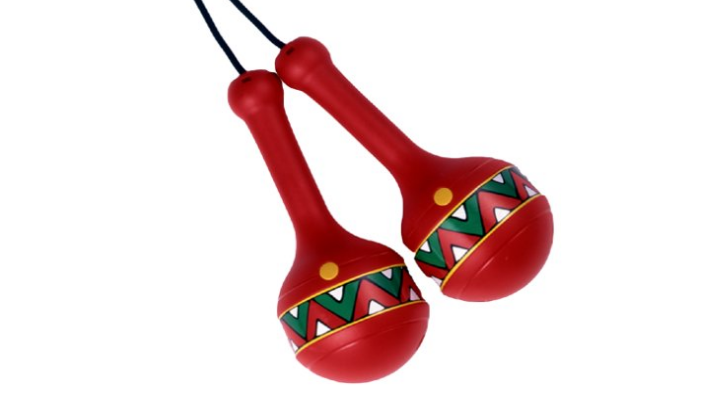
Samba De Amigo Maracas
Rhythm games have been around for a long time. Though in recent years we’ve become more accustomed to plastic guitars and microphones, once upon a Dreamcast there existed gaming maracas designed to accompany the game Samba De Amigo.
The maracas even made a realistic rattling noise, though mercifully it could be silenced.
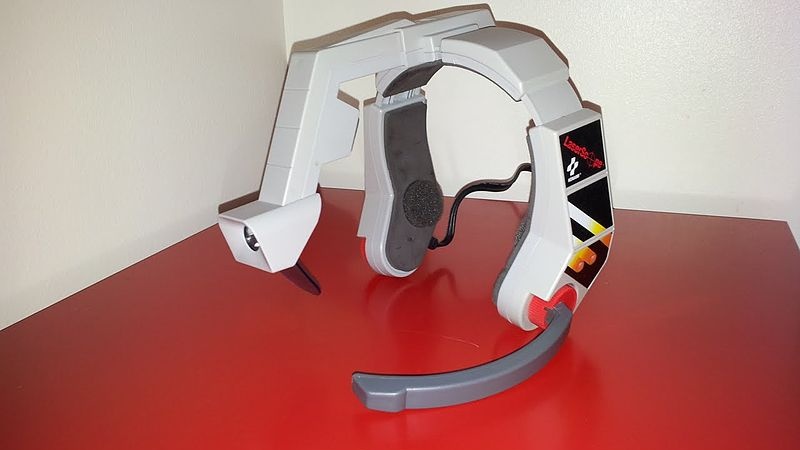
NES LaserScope
Konami’s LaserScope was an accessory licensed for the NES and designed to accompany the game Laser Invasion, though it was also possible to use it with any game that supported the much more successful NES Zapper. It was essentially a head-mounted laser pen that was supposed to sense when the player said the word ‘fire’ and fire a shot within the game.
Unfortunately for Konami, reviews weren’t positive and the microphone was said to be so poor that either it didn’t work at all, or fired at any sound at all leaving players wielding their in-game weapon like Scarface. Reviewers weren’t even swayed by the cross-hair that came down above the wearer’s eye to make them feel cool/impede their vision.
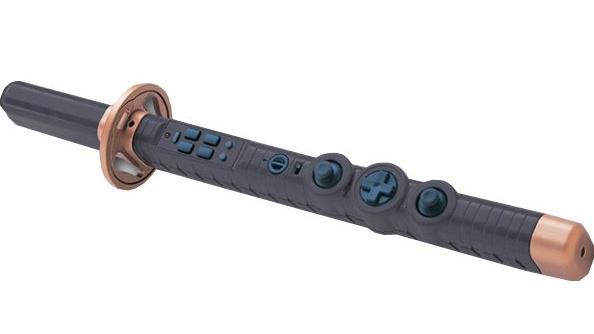
Hori Katana
It isn’t often you come across a controller that you’d actually prefer to display rather than play with, but the Hori Katana for PlayStation 2 is one such controller. The katana controller was an official tie-in for Capcom’s Onimusha 3 and used motion-capture to allow players to emulate the hack-and-slash mechanic of the game by swinging a katana of their own.
It was surprisingly large, though, measuring over three feet in length. So Hori kitted the hilt out with full PlayStation controls for when players’ arms eventually got tired. Hori were obviously aware that players might be tempted to display it as it even came with a ceremonial stand; considering it cost over $150 you’d need to feel like you were getting some secondary use out of it to justify your purchase.
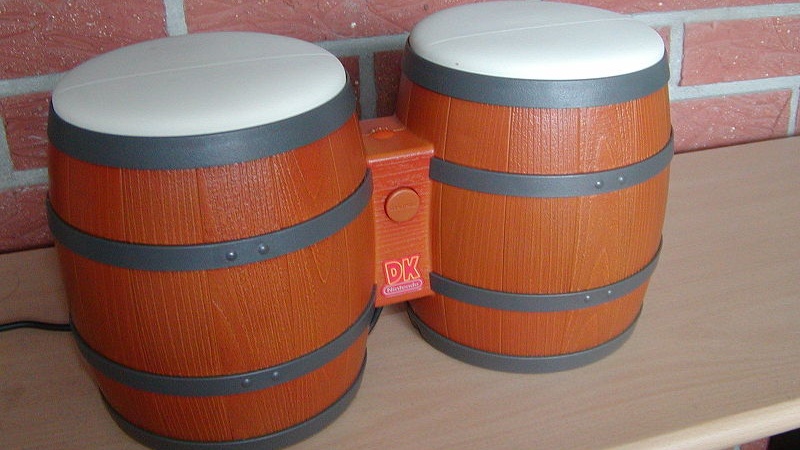
GameCube Donkey Kong Bongos
Nintendo accessories are featuring a lot on this list aren’t they? That’s what happens when your company is so gosh darn experimental and confident enough to release peripherals like these: the DK bongos.
Really, the DK Bongos aren’t all that different conceptually from the instruments we use in the hugely successful Guitar Hero and RockBand games, but it’s their sheer specificity that makes them weird.
They may have been only compatible with four games, but the DK Bongos were actually fairly popular peripherals. It was just unfortunate for those that loved them that they were compatible with the GameCube and not carried over to the Wii as its motion controllers replaced the drums.

Nintendo Switch neck stand
In a shocking twist, we have another Nintendo accessory for you.
Have you ever looked at a parent using a baby sling and thought ‘man, I could really use something like that for my Nintendo Switch’? No, us neither. Still, that hasn’t stopped this third-party accessory manufacturer.
Sure, this is an accessory that has the potential to be useful – it’d be great for using motion controls or your Pro controller on the go. We’d maybe close the blinds and use it in the house where no one could see us lazily reclined on the sofa with our Switch safely propped up in front of us.
But we can’t see ourselves being welcome on a busy morning train with this thing – it’s hard enough to make space for yourself.

Xbox Kinect
The Kinect wasn't weird exactly – in fact its technology was probably just slightly ahead of what the mainstream gamer was looking for – but it's a good example of a console periphery that just didn't do what it set out to. The sales figures started off promisingly, but they topped out at 35 million and software trickled out.
Even when Microsoft bundled the device with the brand new Xbox One console in 2013, it resulted in holding the console back rather than helping the Kinect so great was the public antipathy. Now, the Kinect is no more – Microsoft has stopped making it, its dedicated port no longer appears in new consoles and its adapter has been struck from retail listings too.

Emma Boyle is TechRadar’s ex-Gaming Editor, and is now a content developer and freelance journalist. She has written for magazines and websites including T3, Stuff and The Independent. Emma currently works as a Content Developer in Edinburgh.